Favorite’s take on the classic pre-dinosaur land predator offers a more modern image of the synapsid than most, for its time.
Dimetrodon is one of the quintessential figures in prehistoric life iconography. The sail-backed, quadrupedal carnivore is often mistaken for a dinosaur, but is in fact considered more ancestral to mammals. Most, if not all, major toy companies who produce toys of extinct life have done at least one Dimetrodon. The catch to this fame and popularity is that Dimetrodon is often depicted in stereotypes rather than scientific accuracy. There are exceptions to this, of course: both Safari Ltd. and CollectA released models reflecting current reconstructions of the pelycosaur back in 2018. Another exception came a few years before that when Favorite Co. added Dimetrodon to their Soft Model line in 2015.
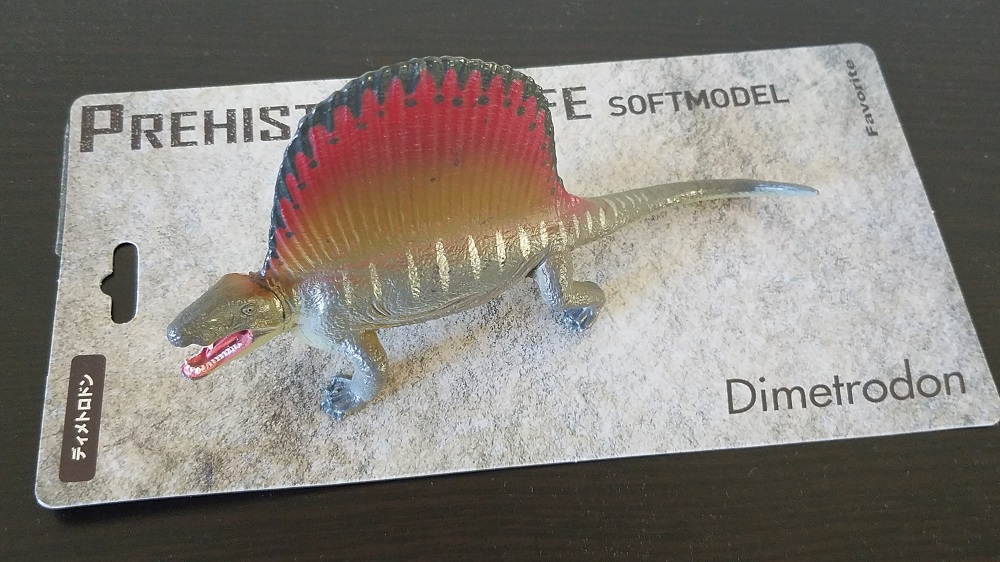
Favorite has shown a tendency to prefer the more famous genera for their dinosaurs and prehistoric life, so it’s only natural that Dimetrodon would eventually be included. Indeed, supervisor Hirokazu Tokugawa comments in an interview included on Favorite’s product page about how unusual Dimetrodon‘s popularity is for a non-dinosaur. Although multiple species of Dimetrodon are known, Favorite does not indicate which particular species their figure represents, although I think it’s likely to be D. limbatus or D. grandis, since those species seem to be reconstructed most frequently. The Soft Model figure measures 17 cm (6.75 inches) long, putting the figure in the range of 1:10 to 1:27 scale, based on the known size ranges of the different Dimetrodon species. The figure also measures about 9 cm (3.5 inches) tall at the top of the sail. Hirokazu Tokugawa mentions referencing skeletal and footprint materials stored in the Gunma Museum of Natural History for the design of the figure. I haven’t found much information about Gunma’s exhibits that’s available in English (apart from the blurbs on the English website), but there is no shortage of skeletal mounts across the museums of the world. So just how well does the Soft Model match the known science?
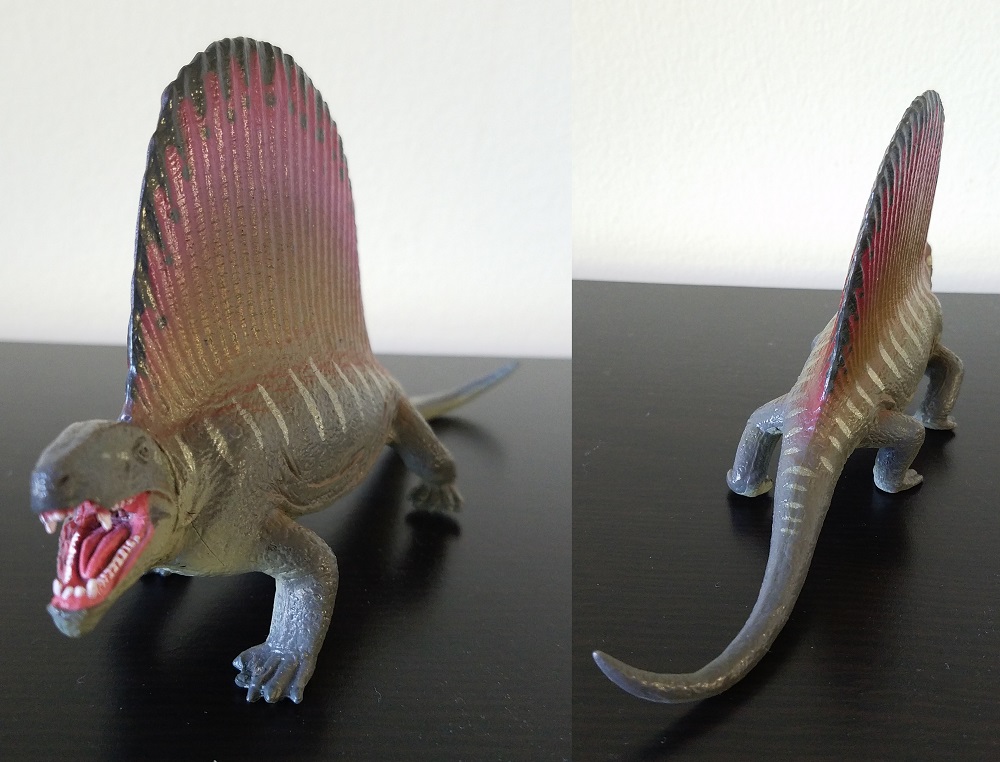
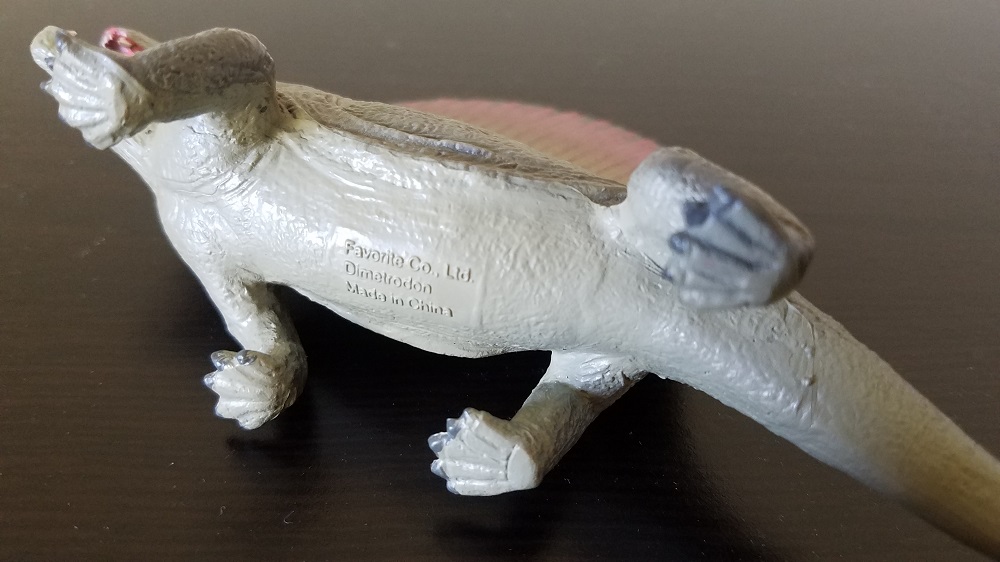
As chance would have it, paleoartist Scott Hartman would give Dimetrodon a significant (well-overdue?) redesign (D. grandis, specifically) merely a year after Favorite’s toy release, so the Soft Model was faced with abrupt obsoleteness. Of course, Favorite can’t be blamed for this turn of events, but it’s important to note all the same. Paleontology and paleoart are ever unpredictable in progress, and any reconstructions need to be viewed in the appropriate context. Much of the imagery surrounding Dimetrodon until the mid-2010s was based on Alfred Romer’s skeletal illustration from 1927(!), and Tokugawa notes that the figure was intended to reflect some new research in addition to more traditional imagery of the animal. The most notable aspect displaying this is the figure’s posture, with the belly lifted off the ground and the limbs in a semi-sprawled gait. Traditionally Dimetrodon gets portrayed as a fully-sprawled belly dragger; however, studies of Dimetropus fossil tracks (thought to have been made by Dimetrodon) indicate a more mobile animal. The soft model isn’t as lively-looking as Scott Hartman’s future skeletal, but it’s a welcome advancement from 20th-century portrayals.
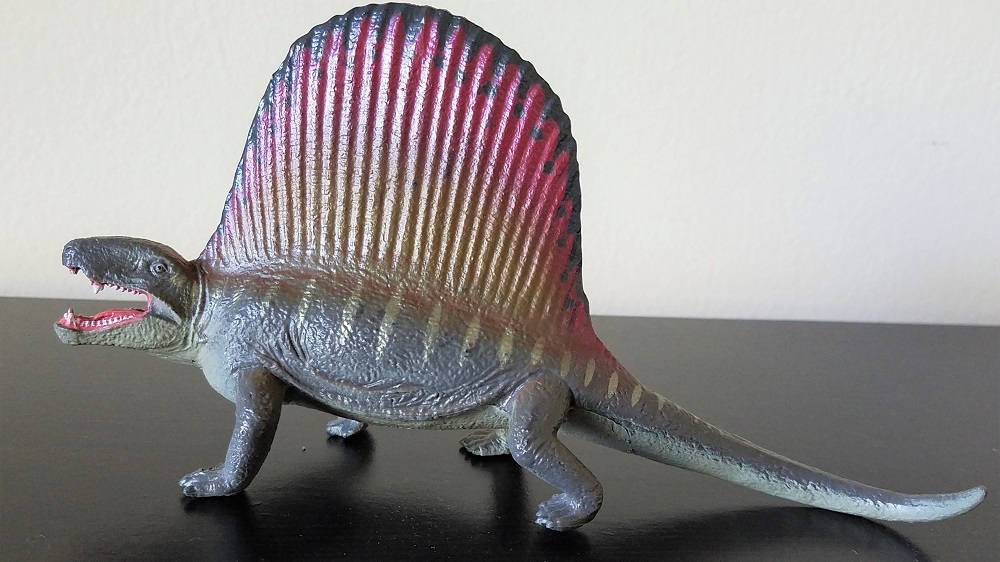
Tokugawa acknowledges he referenced the modern-day Komodo dragon for the image of the soft model, but that he also tried not to imitate the reptile too directly due to the different lineages between the animals. Overall, the soft model matches the anatomy of Dimetrodon as known up until 2016. The body is long and oval-shaped, supported by four short, but stout limbs. The feet feature all five digits, although they appear a little blunted, probably for manufacturing purposes. The sail is splendidly tall and stretches from the neck to the base of the tail, which is roughly the length of the body and rests slightly on the ground. The length of Dimetrodon‘s tail has been modified at least a couple of times before; the length depicted here might be a tad generous, but otherwise appears appropriate. Care has been given to capturing the distinct shape of Dimetrodon‘s skull, rounded in profile and triangular in vertical view. The signature multi-sized teeth of Dimetrodon are in full view, with the mouth open just wide enough to reveal the full fanged dentary.
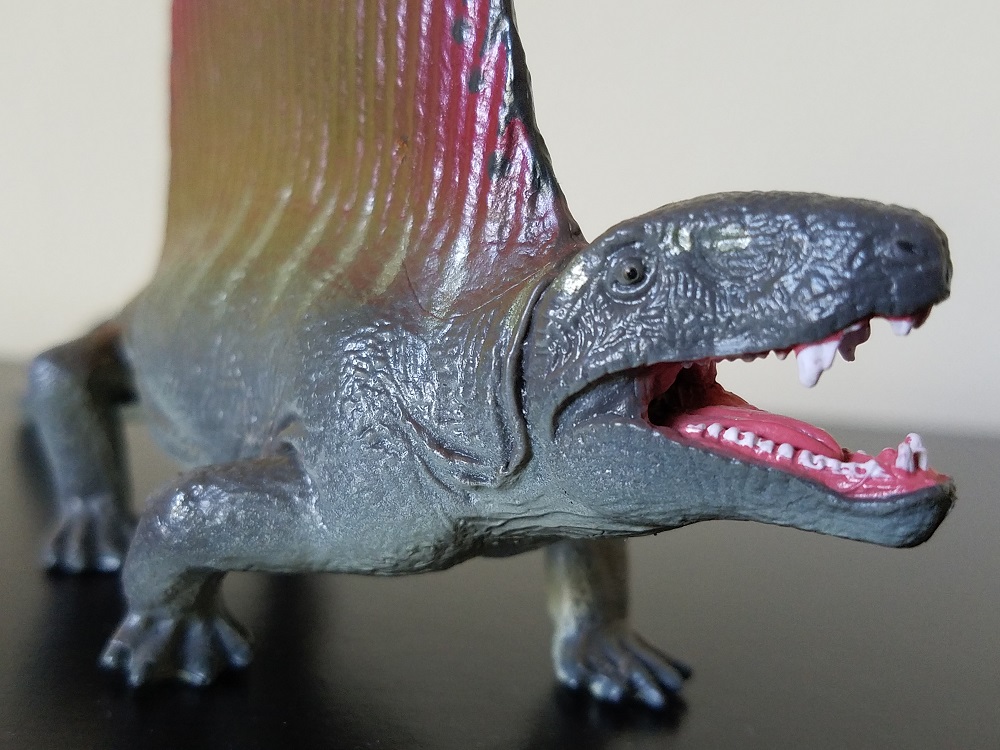
The Dimetrodon appears to have avoided the fate of shrink-wrapping seen in many of the dinosaurs and pterosaurs in the soft model line. The body is slender but plump, with additional skin folds along the flanks. The chest and neck are robust, and the skull bears only a faint outline of the antorbital fenestrae. The mouth features what might also be lizard-like lips, although it’s hard to say for sure with the mouth open. Finer details include a sculpted tongue, neat little nostrils and eyes, stretches and folds of skin on the nape and throat, and scaly texture across the main body. The color scheme for the model – designed to give the figure presence at even a small scale – is a simple two-tone grey with silver stripes for the body, and a flashy iridescent red and yellow for the sail (the overall figure also has a glossy finish to it, but I think this distracts from the details instead of complimenting them). The colors are reminiscent of certain lizard and even bird species today, and looks fairly natural as well as attractive, even if it is highly speculative. Most mammals today have weak color vision, so it’s unknown whether or not a sail pattern like this would even be visible to Dimetrodon.

Favorite’s soft model line has produced some quality results when it’s active, and the Dimetrodon is probably one of their better figures in a while. Even if its depiction had an untimely release with the reveal of a better reconstruction only a year later, this is still probably one of the nicest Dimetrodon toys on the market. It’s a little hard to find Favorite toys outside of Japan these days, but you can always check eBay for deals or find it through Amazon Japan.

Disclaimer: links to Ebay and Amazon on the DinoToyBlog are affiliate links, so we make a small commission if you use them. Thanks for supporting us!



This is still one of my top Dimetrodon figures. It makes me wish for more releases in Favorite’s Prehistoric Life line.
The figure of the dimetrodon is good although the painting of the toy pelycosaurus is not as I would like, the sculpture is good but I understand that the painting is a bit sloppy, in any case it competes in beauty with other brands of dinosaurs. Nice description of the product and without a doubt this dimetrodon exceeds in quality this dimetrodon to other figures of prehistoric animals not dinosaurs of Favorite such as the smilodon.